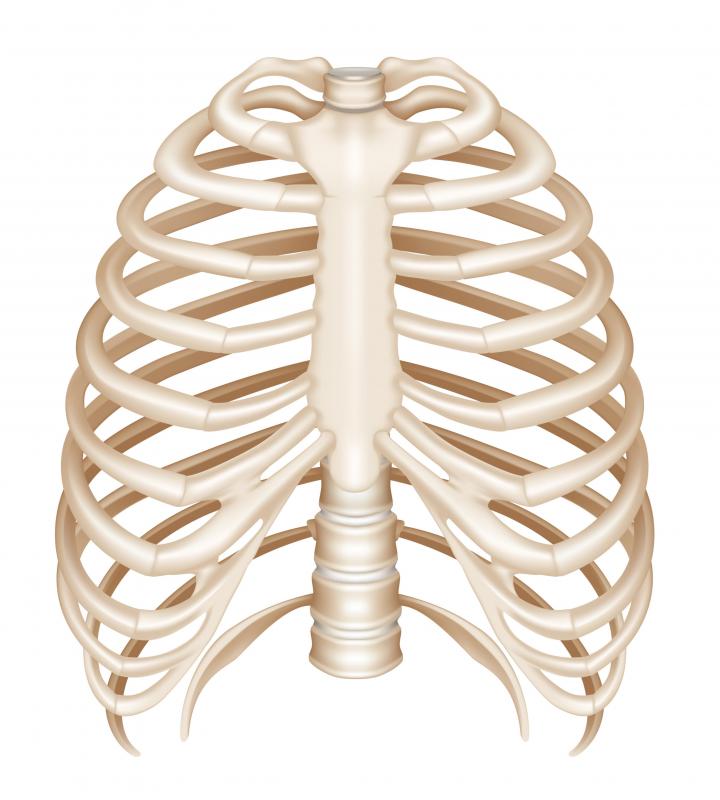At WiseGEEK, we're committed to delivering accurate, trustworthy information. Our expert-authored content is rigorously fact-checked and sourced from credible authorities. Discover how we uphold the highest standards in providing you with reliable knowledge.
What is the Thoracic Vertebrae?
The thoracic vertebrae are 12 small, circular bones that have a hollow center that causes them to somewhat resemble doughnuts. Vertebrae are bones; the thoracic ones form the middle section of the spinal column, also called the spine or back bone. These 12 bones are stacked one on top of the other. Thoracic vertebrae are attached to 12 pairs of ribs that wrap around to the front of the body, where 10 of the 12 pairs also attach to the sternum, or breast bone. Protection for vital organs such as the heart and lungs is achieved by the ribs being attached to the sternum and to the thoracic vertebrae to form the thoracic cavity.
Two pairs of the 12 ribs that form the thoracic cavity are not attached to the sternum; therefore, they often are described as "floating" ribs. The rib cage is the common term used to refer to this cavity of which the thoracic vertebrae are a part. Structure, support and movement for the entire body is provided by the spinal column, which is composed of a total of 33 vertebrae that form a chain down the middle of the back. Such a design allows for some flexibility. A person can bend and lean his or her torso to one side and toward the front or back because the spinal column is flexible.

There are five sections or divisions to the spinal column, beginning at the base of the skull and extending to the coccyx or tailbone. Seven vertebrae compose the first division, which is referred to as the cervical spine or neck bone. These sit on top of the second division, which is the thoracic spine. Following the thoracic spine is the lumbar spine, which is made up of five vertebrae. Next is the sacral spine consisting of five vertebrae, and finally is the coccyx, made up of four vertebrae totaling 33 small bones.

Any damage to the spinal column is potentially very serious because the vertebrae collectively form the housing of the spinal cord, an extension of the central nervous system. The brain sends and receives vital information via the spinal cord. Movement, sensation and vital life functions such as respiration involve the spinal cord. If it is even slightly damaged, particularly the cervical division, paralysis or death could result because respiration and the beating of the heart could be affected.

Although the most easily damaged divisions of the spinal column are the cervical and lumbar, the thoracic vertebrae can suffer severe injury in side-impact automobile collisions. The entire spinal column can be violently shifted toward one side of the body, resulting in injury that could affect the spinal cord. Injury to the thoracic vertebrae could compromise the protection that the thoracic cavity offers for organs such as the heart, lungs and major arteries and veins.
AS FEATURED ON:
AS FEATURED ON:

















Discuss this Article
Post your comments